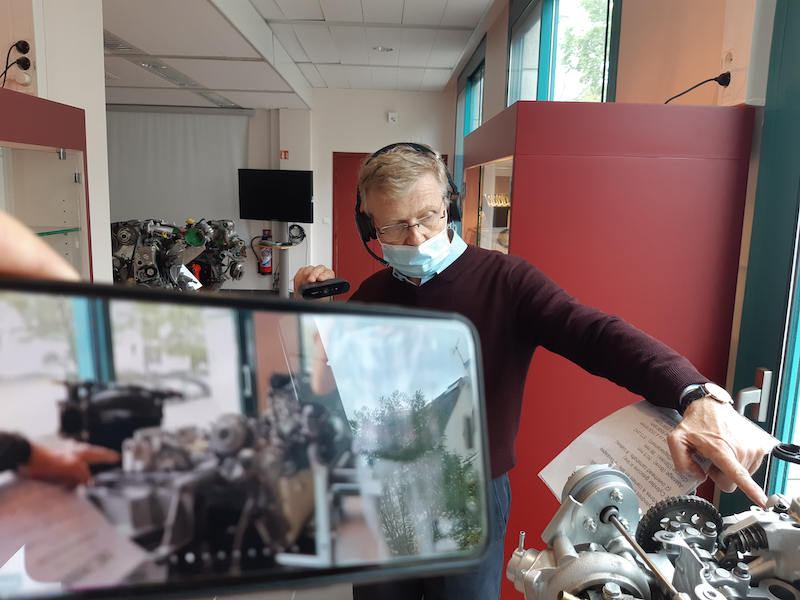The health crisis prevented some fifty international students from travelling to IFP School to start the academic year in September.
To enable them to pursue their studies, the School put in place a mixed-tuition model combining classroom teaching in strict compliance with social distancing guidelines (up until 29 October, the date of the second lockdown) and remote learning.
This unprecedented situation has required numerous adjustments to teaching methods. In this three-part series, we explore the latest measures introduced by the School to ensure student supervision, support and assessment.
We shall begin by examining a virtual reality module designed to allow students to explore IFP School’s engine showroom.
How the project came about
Students in the Powertrains and Sustainable Mobility Center traditionally start their training with a one-day practical workshop in the School’s engine showroom. Covering some 100 square meters, the site contains all the parts that make up a combustion engine, such as pistons, injectors and cylinder heads.
Organized into teams of 3 or 4 and accompanied by a teacher from the Center, students browse the room as part of a “treasure hunt” and identify the various parts, then all debrief together to clarify some points. This day is designed to create team spirit in the class, place students from different schools on an equal footing, and present the educational path that students will be following.
Reproducing the experience remotely
As IFP School offers applied graduate programs, this practical workshop plays a key role in students’ training. To make the experience come alive for remote-learning students, teachers from the Powertrains and Sustainable Mobility Center and a team from Lab e•nov, the laboratory for digital cultures, started by taking 2D and 360° photographs.
Next they designed the immersive module using Sphere software. Finally, they uploaded the finalized experiment to a server accessible to students as well as on the Learning Management System.
With the help of more than 120 photos, remote students could virtually walk around the room and zoom in the mechanical parts.

In parallel, the teaching staff also formed pairs of “study buddies” consisting of one on-campus and one remote-learning student. The aim was to facilitate interaction between them and promote cooperation in finding solutions to the questions asked.
This complementary approach makes it possible to exploit digital technologies while remaining attentive to human interaction.
Initial experiences
Two different uses of the module were tested. First, the experiment was made available to students in the Energy and Powertrains program the day before the workshop. This gave the most curious an opportunity to start to pinpoint the various locations in advance. On the day of the workshop, students were organized into twos and even threes.
Marie-Thérèse Hélayel, a student in the Energy and Powertrains program, followed the workshop from Lebanon. “As my visa came late, I was unable to be physically present for the one-day workshop,” she explained. “Working in threes and using the virtual reality module let me discover the engine showroom as if I were present onsite. It was an enriching interactive experience.”
Students in the Electrification and Automotive Propulsion (EPA) program, who were under lockdown, discovered the engine showroom 100% remotely. Equipped with cameras and mikes, Philippe Pierre, supervisor of the program, prepared an initial visit for students in a virtual class via Zoom. Students then used the virtual reality module to further explore the room, identify the mechanical parts and fill in a questionnaire.
For Lucas Chazottes, a student in the EPA master program, it was the first hands-on experience with virtual reality: “it was the first time I used it, and I would gladly do it again, even though it will never completely replace handling actual parts.”
He particularly appreciated the opportunity to discover damaged parts.
“As we received explanations along the way on the different kinds of breakage, it made it easier afterwards to visualize them than on slides alone,” he explained.
His classmate Samuel Mevaa was also satisfied with the experience.
As he noted, “virtual reality gave me an immersion in the engine showroom that was fairly accurate overall and let me match a picture with each engine part.”
For further information
Author of the article : Meyling Siu